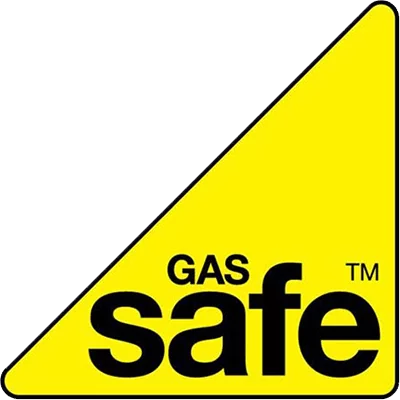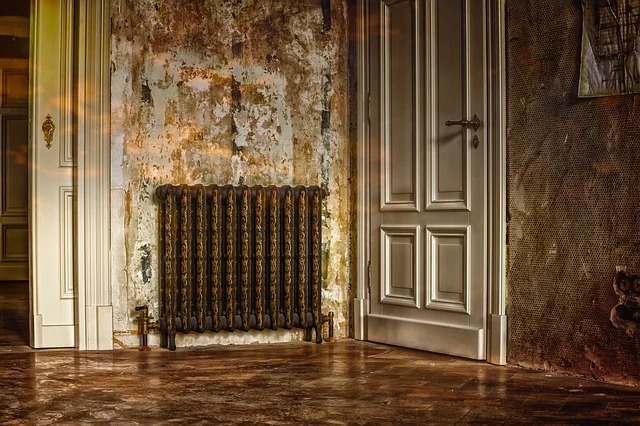Central heating systems are a crucial part of our homes, providing warmth and comfort during the colder months. However, when the central heating system malfunctions, it can disrupt daily life and lead to discomfort. In this blog post, we’ll explore common central heating problems, their causes, and solutions to help you understand why your central heating may not be working as it should.
Understanding the Central Heating System
A central heating system is a vital component of many homes, providing warmth and comfort during the cold months. It works by distributing heat throughout your home, ensuring that each room remains at a comfortable temperature. Understanding how this system operates is essential for efficient use and troubleshooting.
Key Components of a Central Heating System:
- Boiler: The boiler is the heart of the central heating system. It’s responsible for heating water, which is then circulated through the system. There are various types of boilers, including combi boilers, system boilers, and conventional boilers. Each type has its advantages and disadvantages.
- Combi Boiler: Combi boilers, short for combination boilers, are a popular choice in many households. They are known for their compact size and efficiency. Combi boilers heat water on-demand, which means they only heat water as needed, rather than storing it in a tank. This can lead to energy savings and hot water that’s available instantly. Combi boilers are particularly suitable for smaller homes where space is a consideration.
- Radiators: Radiators are typically found in each room and serve as the heat emitters. They contain hot water from the boiler, and the heat is transferred to the surrounding air, warming the room. Modern radiators are designed for energy efficiency and improved heat distribution.
- Thermostat: The thermostat is the control unit of the central heating system. It allows you to set the desired temperature for your home. When the temperature falls below your chosen setting, the thermostat signals the boiler to produce more heat until the target temperature is reached.
- Pipes and Pumps: Pipes connect the boiler to the radiators, ensuring that hot water is efficiently distributed throughout the home. Pumps are used to facilitate the circulation of water, aiding the even distribution of heat.
- Expansion Tank: Many central heating systems include an expansion tank, which accommodates the expansion of water as it heats up. This helps maintain stable pressure within the system.
- Timer/Programmer: A timer or programmer allows you to set specific schedules for when your heating system operates. This is useful for ensuring that your home is warm when needed and can help save energy when the heating isn’t required.
Common Symptoms of Central Heating Problems
The first step in diagnosing central heating issues is recognising the signs that something is wrong. Common symptoms include:
- Cold Radiators: If your radiators are not heating up or have cold spots, it indicates a problem with heat distribution.
- Strange Noises: Unusual sounds such as clanging, banging, or whistling can be signs of issues within the system.
- Fluctuating Temperatures: If your home’s temperature constantly fluctuates, it may be due to thermostat or boiler problems.
Causes of Central Heating Problems
Central heating problems can be caused by various factors, including:
- Airlocks: Air can get trapped in the radiators, preventing hot water from flowing and heating the room effectively.
- Boiler Malfunctions: Problems with the boiler can lead to a lack of hot water or heating. Checking your boiler pressure would be a first port of call, when facing heating issues.
- Thermostat Errors: Incorrect thermostat settings or a faulty thermostat can lead to heating inconsistencies.
- Frozen Pipes: In cold weather, pipes can freeze, preventing water circulation.
Troubleshooting Central Heating Issues
To troubleshoot common central heating problems, consider the following steps:
- Bleeding Radiators: If you have cold radiators, bleeding them can release trapped air and restore proper circulation.
- Check the Boiler: Ensure that the boiler is functioning correctly, has sufficient pressure, and is free from faults.
- Inspect the Thermostat: Verify that the thermostat settings are accurate, and the thermostat is working as expected.
- Thaw Frozen Pipes: If you suspect frozen pipes, thaw them using gentle heat or a professional’s help.
The Importance of Regular Maintenance
Prevention is often the best solution. Regular central heating system maintenance can help identify and rectify issues before they become significant problems. Periodic servicing of your boiler and radiators, as well as checking for airlocks, can maintain the efficiency and reliability of your central heating system.
When to Seek Professional Help
While some central heating problems can be resolved through DIY troubleshooting, there are many other form of instances where professional help is necessary. You should consider calling a heating engineer or technician if:
- You encounter issues beyond your expertise.
- There’s a persistent problem despite your efforts.
- Safety concerns arise during maintenance or troubleshooting.
Specific Central Heating Problems and Solutions
Here, we’ll discuss specific central heating problems and their solutions:
- Boiler Breakdowns: A faulty boiler can disrupt your heating. To resolve this, consult a professional boiler repair service.
- Radiator Issues: Cold radiators or uneven heating can often be fixed by bleeding them, but deeper problems may require professional attention.
- Thermostat Malfunctions: If your thermostat is malfunctioning, it may need recalibration or replacement.
Commonly Asked Questions and Answers when your central heating is not working
Resetting your central heating system can often resolve minor issues. Here’s a step-by-step guide on how to reset it:
Turn off the heating: Ensure your heating system is turned off by switching off the thermostat or programmer. This is a crucial safety step.
Locate the reset button: Find the reset button on your boiler. The location may vary depending on the boiler model, so consult your boiler’s manual for guidance. It’s typically a red or black button.
Press and hold the reset button: Press the reset button and hold it down for around 5-10 seconds. You may hear a clicking sound or see lights flashing during this process.
Release the button: After holding it for the specified time, release the reset button.
Wait for the boiler to restart: Your boiler should now restart. It might take a few minutes for the system to go through its startup process. Listen for the boiler firing up and check the display for any error messages.
Test your heating: Once the boiler has restarted, turn on your heating system using the thermostat or programmer. Check to see if the issue has been resolved.
If your central heating system continues to have problems or if the issue recurs frequently, it’s advisable to seek professional assistance to diagnose and address the underlying cause.
If your central heating isn’t working, but you still have hot and cold water throughout, it usually indicates a specific issue with the heating side of your system. Here are some common reasons for this problem:
Faulty motorised valve: Your central heating and hot water systems are often controlled by separate motorised valves. If the valve that controls the heating is stuck or malfunctioning, it can lead to heating issues while leaving the hot water unaffected.
Airlocks: Air can get trapped in the central heating pipes or radiators, hindering the flow of hot water to the radiators. Bleeding the radiators can often resolve this issue.
Thermostat or programmer settings: Check if your thermostat or programmer is set to heating mode. It’s possible that it might be set to hot water only or in an “off” mode for heating.
Faulty diverter valve: Some boilers have a diverter valve that directs hot water to either the radiators or the hot water tap. If this valve is malfunctioning, it can lead to heating problems while maintaining hot water supply.
Issues with the central heating pump: If the pump responsible for circulating hot water to the radiators is faulty, it can result in hot water being available but no heat reaching the radiators.
If you’ve checked these common issues and the problem persists, it’s recommended to contact a professional heating engineer to diagnose and fix the problem.
The length of time a house can be left without heating depends on various factors, including the season, climate, and condition of the house. In general, it’s not advisable to leave a house without heating for extended periods due to potential risks and consequences:
Winter: In colder climates, it’s crucial to maintain some level of heating to prevent issues like frozen pipes, which can lead to burst pipes and water damage. Extended periods without heating in winter can also result in discomfort and potential health risks due to low indoor temperatures.
Summer: During the summer months, you can safely turn off your central heating system for an extended period, as there’s typically no risk of freezing. However, it’s essential to ensure your heating system is properly maintained to avoid issues when you need it again.
It’s generally recommended to keep your heating system running at a minimum level during the winter, even if you’re away, to maintain a reasonable indoor temperature and prevent problems associated with extended periods of inactivity. If you plan to be away from your house for an extended time, consider setting your thermostat to a “frost protection” or “holiday” mode to keep the temperature above freezing and protect your home from cold-related damage.
Upgrading and Modernising Your Central Heating
Consider the benefits of upgrading your central heating system to a more modern and energy-efficient model. Modern systems offer better performance and energy savings.
Environmental Considerations
Be mindful of the environmental impact of your central heating system. Regular maintenance and choosing energy-efficient options can help reduce your carbon footprint.
Conclusion
Central heating problems can be inconvenient and uncomfortable, but with the right knowledge, you can often diagnose and resolve these issues. Remember to consider regular maintenance, professional help when needed, and upgrading to more efficient systems to enjoy a warm and comfortable home.
Additional Tips and Resources
For further guidance, you can explore additional tips, tools, and resources on central heating maintenance, repair, and upgrades. These can help you make informed decisions about your central heating system.


